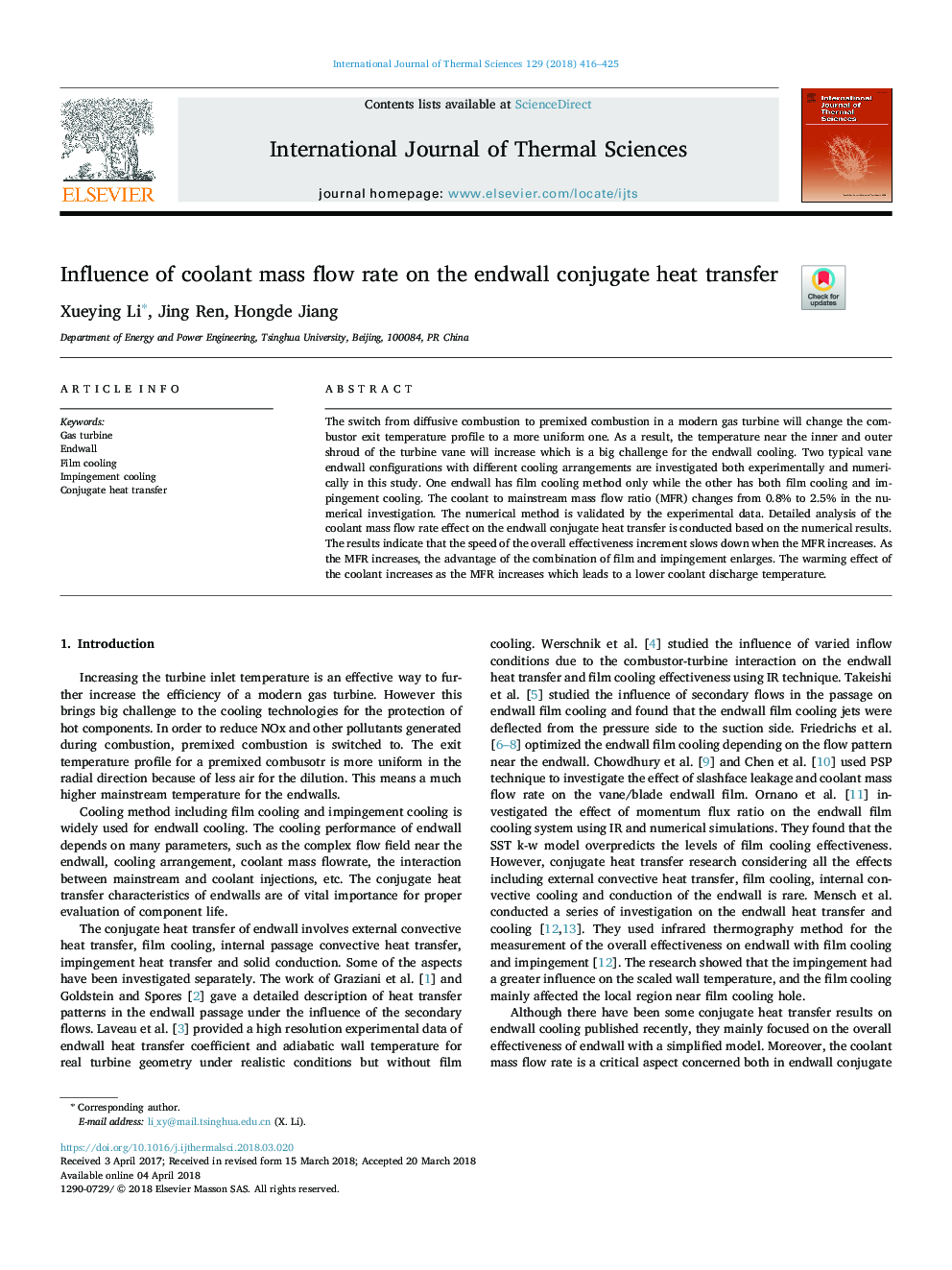| Article ID | Journal | Published Year | Pages | File Type |
|---|---|---|---|---|
| 7060735 | International Journal of Thermal Sciences | 2018 | 10 Pages |
Abstract
The switch from diffusive combustion to premixed combustion in a modern gas turbine will change the combustor exit temperature profile to a more uniform one. As a result, the temperature near the inner and outer shroud of the turbine vane will increase which is a big challenge for the endwall cooling. Two typical vane endwall configurations with different cooling arrangements are investigated both experimentally and numerically in this study. One endwall has film cooling method only while the other has both film cooling and impingement cooling. The coolant to mainstream mass flow ratio (MFR) changes from 0.8% to 2.5% in the numerical investigation. The numerical method is validated by the experimental data. Detailed analysis of the coolant mass flow rate effect on the endwall conjugate heat transfer is conducted based on the numerical results. The results indicate that the speed of the overall effectiveness increment slows down when the MFR increases. As the MFR increases, the advantage of the combination of film and impingement enlarges. The warming effect of the coolant increases as the MFR increases which leads to a lower coolant discharge temperature.
Related Topics
Physical Sciences and Engineering
Chemical Engineering
Fluid Flow and Transfer Processes
Authors
Xueying Li, Jing Ren, Hongde Jiang,
